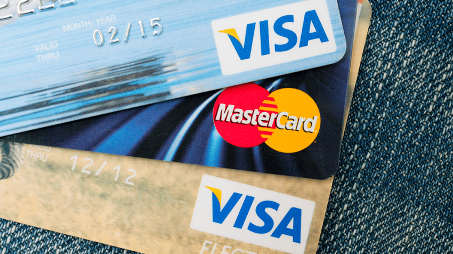
We can differentiate four types of credit cards you can choose based on your goals and preferences: balance-transfer cards, credit-building cards, rewards, and low-interest cards.
The main idea is to understand and analyze your financial goals and spending habits, which will help you determine which one is best for your specific needs. Besides, it would be best to familiarize yourself with different providers and their fees and interest rates before applying, directly impacting the amount you spend on a credit card.
You can find many options when you decide to get a new one. At the same time, you will find the market filled with numerous advertisements, offers, and emails,allowing you to choose from a pool of different providers.
Still, deciding on the best option can be overwhelming, especially given the numerous options. Therefore, if you are unsure about what to consider when choosing a credit card and how to choose the one that best suits your preferences, we will help you narrow your search. After clicking here, you will learn more about credit cards.
The main goal is to ensure your credit card meets your needs and preferences, which will affect your choice. We will help you consider the features that will work for you while explaining the rewards and benefits you will get with each option mentioned above.
Credit Score

The first thing you should consider before applying for a card is your creditworthiness and overall history. The strength of your score will directly affect your options by reducing or expanding them accordingly.
A credit score is necessary for specific cars, and providers will consider annual fees, eligibility, and interest rates based on your ability to repay the amount you take. For instance, the best rewards credit card requires a significant score, but you can find options to build your credit from scratch.
As a result, you should check out your score, which is necessary for starting your search. That way, you can decide whether the application is worthwhile or if you should get a credit-building card that will offer you a chance to boost your creditworthiness.
The simplest way to boost your score is to pay your bills promptly and deal with your debt. Besides, taking low debt or reducing credit utilization is another way of boosting your score.
Even with a perfect credit score, you should avoid applying for a few cards simultaneously. Each time you apply, a provider will conduct a hard inquiry of your score, which will cause it to fall for a few points. Dealing with a few applications will directly reduce your score, meaning you must wait six months to return to normal.
Credit scores can help you determine the best card option for your needs. Still, it would be best to research to help you determine the one that will work for you. The main idea is to understand your current financial situation, which will directly affect the type of credit card you should choose.
You can find cards to help you achieve a few goals, such as earning rewards, building credit, traveling, and making a new purchase. Whatever you decide to do with it, you should understand the reasons before taking a specific option.Enter this site: https://www.consumerfinance.gov/consumer-tools/credit-cards/ to learn more about this particular topic.
Credit-Building Cards for Boosting Your Score

As mentioned above, you must use your credit card responsibly, which will directly boost your credit score. However, specific cards are created for people who lack history due to age or lousy credit altogether. They are simple to qualify for, meaning you will get everything you need.
The main idea is to look for credit-building cards that will offer you free score access, paths to upgrade when you reach specific options, and the ability to boost your reviews. These features are standards that will help you boost your creditworthiness.
We can differentiate a few options to help you achieve this goal, including secured credit cards, unsecured credit-building, and student credit cards.
Secured cards are like regular ones, but you must make a small security deposit that will function as a card limit. The deposit is a security for banks or providers that you will repay the amount, meaning if you default, the provider will take the deposit from you. However, this card can improve your score and boost your regular payment history.
On the other hand, you can choose unsecured credit-building cards that do not require an upfront security deposit. Without a deposit, lenders can rely on your credit score for approval. Generally, it is more challenging to obtain this option than a secured one, which is vital to remember.
Student cards are perfectly created for college students and aim to help them build credit. Since most students do not have a relevant borrowing history, qualifying is straightforward, while they come with low credit limits and higher interest rates.
Still, paying everything before the due date can prevent interest from accruing on the outstanding balance. At the same time, some student cards feature rewards and benefits, such as the chance to get cashback, a common trait on other reward cards. Learning more about credit cards or kredittkort info would be best to determine the best option.
Balance Transfer Cards for Dealing with High-Interest Debt

If you have a high-interest debt that you want to consolidate into a single, streamlined payment, you can take advantage of balance transfer options. Therefore, you can transfer debt from a few cards into a single account that features introductory zero-percent APR, which makes it appealing for reducing debt.
The main idea is to create a payoff plan for the process because the introductory lack of interest will last for a few months, while afterward, it will have the regular annual percentage rate.
It is a perfect solution for people with high-interest debts on other cards because a proper balance transfer card with zero-percent introductory APR can help you avoid accumulating debt and straining your finances.
The main idea is to find a balance transfer credit card that offers at least twelve months of zero interest, which will help you save money and repay the debt. Still, you should consider the fees associated with transferring a specific amount, which can be between one and three percent of the amount you wish to transfer.
Determine whether you can handle and repay the amount promptly before choosing the best action. It is as simple as that.
Low-Interest Credit Cards for Large Purchases

Remember that low-interest credit cards are perfect for making significant expenses, which will help you minimize interest charges throughout the process. We can differentiate two types that feature a low ongoing rate: lower-than-average APR and zero-percent introductory APR for new purchases that will last for a limited period.
Remember that cards with promotional APR on purchases are the best option, especially if you want to buy or invest in something expensive, such as a renovation, moving, or new appliance.
The best thing about promotional APR cards is the chance to handle the expenses over time without accumulating significant interest on your outstanding balance. Remember that promotional APRs can last between one and two years, after which you will receive regular interest.
Besides, if you wish to carry a balance after a promotional period, you must focus on ongoing APR instead of the introductory rate. Some low-interest cards will feature variable interest rates, starting at seventeen percent. Still, they can fluctuate up or down depending on numerous external factors you cannot control.
The simplest way to obtain a low-interest credit card is by checking out small banks and local credit unions. They feature lower interest rates than regular and most prominent banks, which is essential to remember. Of course, credit requirements can vary, but you will need a solid or exceptional credit score to qualify for the lowest rates.







